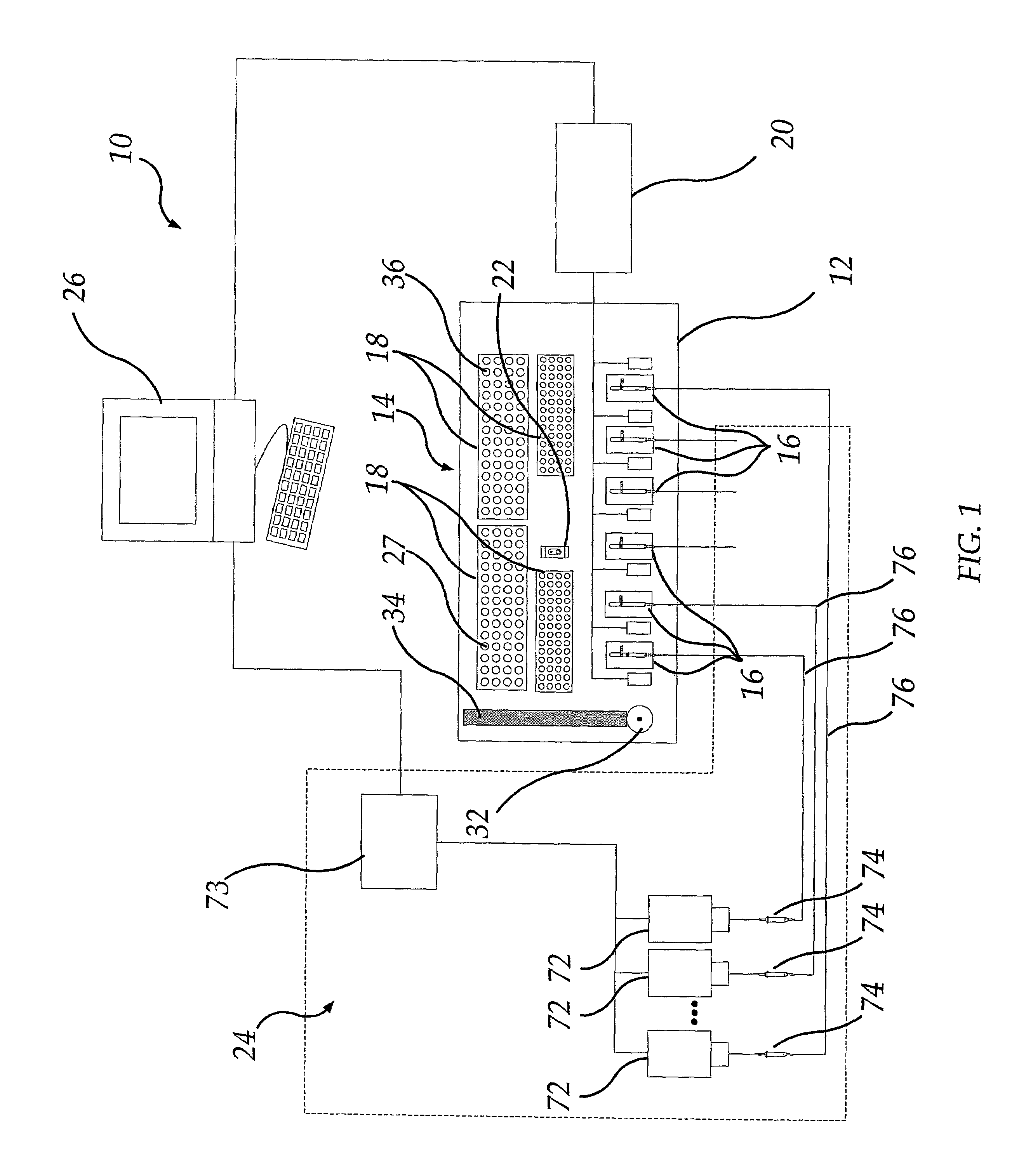Apparatus and method for electrophysiological testing
a technology of electrophysiological testing and apparatus, applied in the field of electrophysiological testing of biological samples, can solve the problems of unsatisfactory approach, increase the cost of equipment, floor space, overhead, personnel, etc., and achieve the effect of increasing productivity, reducing the consumption of valuable test materials, and multiplication of the effectiveness and productivity of a single operator
- Summary
- Abstract
- Description
- Claims
- Application Information
AI Technical Summary
Benefits of technology
Problems solved by technology
Method used
Image
Examples
example 1
[0097]The purpose of this example is to illustrate the time and material required by the present invention to perform the same measurements described in Comparative Example A. Six oocytes are mounted in six recording stations 16 on the deck 12 at one time. The oocytes represent three receptor subtypes in duplicate. Ten compounds in six concentrations each (60 vessels plus one vessel for reference compound) are mounted on the deck.
[0098]The time required perform one concentration-response curve for one compound at one oocyte is 51.1 minutes plus set-up time. The time required to run two concentration-response curves for one compound (one receptor subtype, each of two oocytes) is 51.5 minutes plus set-up time. The time required to run ten concentration-response curves for one compound at each of three receptors in duplicate is 53.5 minutes plus set-up time. The time required to run all concentration-response curves for all ten compounds is 540 minutes plus set-up time. Thus, the measu...
example 2
[0104]To perform the antagonist or modulator measurements described in Comparative Example B, the present invention would require only slightly more time than it required to run the agonist experiments described in Example 1. However, the present invention would use relatively little material—19 nanomoles of each test material—while maintaining the capacity to run many different test materials and test subjects, important factors that are lost in the conventional manifold system considered above.
example 3
[0105]FIG. 15 shows the normalized response to an agonist as a function of its logarithm of concentration for four Xenopus oocytes exogenously expressing a type of rat vanilloid receptor abbreviated R-VR1. The four oocytes were tested concurrently in the apparatus of this invention. Each oocyte was exposed to the agonist capsaicin at various concentrations ranging from 0.03 μM to 30 μM. In each oocyte, responses were referenced (normalized) to control responses (1 μM capsaicin) in order to correct for the degree of receptor expression and sensitivity. The data points in the graph show the normalized responses from all four oocytes as mean±standard error of the mean, and the curve represents the Hill equation fitted to these data points. The inset shows a family of responses recorded from one of the four oocytes; individual responses to various concentrations of capsaicin are overlaid.
PUM
 Login to View More
Login to View More Abstract
Description
Claims
Application Information
 Login to View More
Login to View More - R&D
- Intellectual Property
- Life Sciences
- Materials
- Tech Scout
- Unparalleled Data Quality
- Higher Quality Content
- 60% Fewer Hallucinations
Browse by: Latest US Patents, China's latest patents, Technical Efficacy Thesaurus, Application Domain, Technology Topic, Popular Technical Reports.
© 2025 PatSnap. All rights reserved.Legal|Privacy policy|Modern Slavery Act Transparency Statement|Sitemap|About US| Contact US: help@patsnap.com



